|
It's been a while since we've made it up to the Summit Metroparks System, so we mad a trip to Silver Creek in Norton. It was about a week ago (4/19) and spring had just arrived in Summit County. It's remarkable how big of difference just a few miles makes in the blooms. Although it was early, there were still a great many flower finds, vinca, may apple, spring beauty, cutleaf toothwort, purple cress, a pond filled with frogs in a mating tizzy (yes those ripples are hundreds of frogs laying eggs and such), variety of violets, trout lily, wild strawberry, the pine grove is one of my favorite places here!, hen bit, willows in various opening stages, blooming quince (?), and star moss. It is a really beautiful park, take some time this weekend to go explore!
0 Comments
A native to the eastern US, this showy flower blooms from March-July (deadheading flowers will prolong bloom time).
Seeds attract Mourning Doves, Bobwhite Quail, and White-tailed Deer. In early medicine, the plant was boiled to make tea for diarrhea. Tea used as rinse for sore throat, thrush, and mouth ulcers. Dried, powdered roots applied to bleeding blood vessels to promote coagulation. Yes, this sounds like a delicious condiment but it is in fact a highly invasive non-native plant.
About the plant. "Garlic mustard is a biennial herb. It begins as a rosette of leaves in the first year, overwinters as a green rosette of leaves, flowers and fruits in the second year, and then dies. First-year rosettes consist of kidney-shaped, garlic-smelling leaves, the second-year plant grows a stem up to 4 feet tall with triangular, sharply-toothed leaves. The small, four-petaled flowers are white and grow in clusters at the top of the stem. Garlic mustard produces large quantities of seeds which can remain viable for seven years or more." This species can survive in bright to dim locations, wet or dry soils. It is resilient and can grow anywhere. What makes this plant so bad? Crowds out native plant species by carpeting the forest floor and not allowing access to light for native species. This plant sits in the top 10 most invasive species in Ohio list. Poses as a place for butterflies to lay eggs, but is toxic to caterpillars and has been killing off the West Virginia White Butterfly. Does not actually make a good condiment (a joke, a joke). What can I do about it? Eradicating garlic mustard is easy work, but takes time. The ultimate goal in removing garlic mustard is to prevent seed development and spreading until the existing seed bank is depleted. Unluckily for us, this may take 2- 5 years in any confined area. Cutting the flowering stems at ground level and pulling plants before they set seed is one method that can be done in smaller areas, but may be too labor intensive for large patches. It's important to know when pulling garlic mustard you should always make sure that the taproot is completely removed or the plant will re-Garlic mustard its sprout. All cutting should be bagged, dried and then burned. Get Involved! Many local parks have 'Garlic Mustard Pulls' this time of year. Check with your local parks for opportunities to volunteer! No, this is not an invasion of the pod people, this is a Wild Ginger plant. The Wild Ginger (Asarum canadense) is a native wildflower to the Eastern US blooming in early spring then creating a wonderful ground covering later in the season. This has made it an attractive plant for home gardens that get a lot of shade. Remember, it is illegal to harvest wildflowers from local or national parks/forests without obtaining a permit! If harvesting from private property, only do so with the express permission of the landowner. Support your local native plant nursery by purchasing plants that have not been wild collected is a very good option. Hidden in at the base of the two broad leaves is a tiny purple/brown flower. "The color and the location of the flower have an unusual and interesting story. The flower evolved to attract small pollinating flies that emerge from the ground early in the spring looking for a thawing carcass of an animal that did not survive the winter. By lying next to the ground flower is readily found by the emerging flies. The color of the flower is similar to that of decomposing flesh. Whether these flies pollinate the flower or not is in some dispute. Never the less they do enter the flower to escape the cold winds of early spring and to feast upon the flowers pollen. Some of the pollen attaches to their bodies and is taken with them when they visit the next flower." The root of this plant gives off a ginger-like aroma, but it is not recommended for consumption. It is a completely different plant from the ginger root which you can purchase at the store (which is safe for consumption). The leaves of this plant may also cause irritation (which I found out the hard way) with a light nettle-like sting. Look for broad pointed pairs of leaves in shady/partly shady wooded areas, to identify follow the stems to the base to see the unmistakably unique flower of this awesome wildflower. From those of us who spend everyday as if it were Earth day. Enjoy the spring slideshow! Wood Anemone (Anemone Quinquefolia) is a delicate spring wildflower rising up from a stalk which has basal leaves and a whorl of 3- to 5-parted leaves at its apex.
With the flower sitting on top a long stalk, it has a tendency to tremble in the breeze giving it the secondary name "Wind Flower". Blooming April - June in wet 'mucky soil' forests. The Rue-anemone is a delicate woodland perennial, blooming between March and June in moist wooded areas. At the top of the stalk is a lacy whorl of 3-parted, dark-green leaves above which rises delicate, reddish-brown stems bearing pink or white blossoms.
It is similar to Wood Anemone, except for the numerous flowers and rounded leaflets. The leaves of Rue Anemone are similar to those of the meadow-rues. There is also a False Rue-anemone which has similar flowers but is much taller and has three sets of deeply lobed (three fingered) leaves. Grows in large groups. Along with knowing what all the beautiful native wildflowers are this spring, it's also important to know the invasive and damaging species (lesser celandine, garlic mustard, some honeysuckle species, japanese hops, etc) and how/when to remove them. These species are known to do damage to the surrounding plants as well as pose a threat to the native wildlife. Lesser Celandine can be found in open woods, waste areas, meadows, and floodplains preferring sandy soil. It closely resembles the Marsh Marigold and is often misidentified as such.
To tell the difference between the two it's important to know the native Marsh Marigold has only 5-9 petals where as the Lesser Celandine has 8-12, and the leaves of the Marsh Marigold are round sometimes kidney shaped where as the Lesser Celandine which has more of a heart shape. Marsh Marigolds tend to stay in small bunches and do not have the same sort of underground tuber system that the Lesser Celandine have. If left to go it will completely blanket the area displacing many native plant species, especially those with the similar spring-flowering life cycle. Some examples of native spring ephemerals which become choked out by the Lesser Celandine include bloodroot, wild ginger, spring beauty, harbinger-of-spring, twinleaf, squirrel-corn, trout lily, trilliums, Virginia bluebells, and many, many others. These plants provide critical nectar and pollen for native pollinators, and fruits and seeds for other native insects and wildlife species. Because Lesser Celandine emerges well in advance of the native species, it has a developmental advantage which allows it to establish and overtake areas rapidly. How to get rid of this species: First, make 100% sure you have properly identified the right species before you do anything else. Due to the system of underground tubers with which it reproduces, hand-pulling is not recommended (unless you have a trowel and time to dig and pull every tuber along the system). According to the National Park Service: "While manual methods are possible for some (small) infestations, the use of systemic herbicide is more effective because it kills the entire plant including the roots and minimizes soil disturbance. Chemical In order to have the greatest negative impact to celandine and the least impact to desirable native wildflower species, herbicide should be applied in late winter-early spring, generally February through March. Start applications prior to flowering and up until about 50 percent of the plants are in flower, around April 1, then stop. After that, control success declines and many more native wildflowers have emerged that could be killed by spray. Native amphibians would also be emerging and could be harmed. Apply a 1 to 1.5% rate of a 53.8% active ingredient glyphosate isopropylamine salt (e.g., Rodeo® which is labeled for use in wetland areas), mixed with water and a non-ionic surfactant to foliage, avoiding application to anything but the celandine. Glyphosate is systemic; that is, the active ingredient is absorbed by the plant and translocated to the roots, eventually killing the entire plant. The full effect on the plant may take 1-2 weeks. Retreatment the following year will likely be needed. Applications can be made during the winter season as long as the temperature is 50 degrees Fahrenheit or above, and no rain is anticipated for at least 12 hours. Because glyphosate is non-specific, spray should be directed such that it contacts only fig buttercup and does not drift onto desirable native plants. To minimize impacts to sensitive-skinned frogs and salamanders, some experts recommend applying herbicide in March and then switching to manual methods. Manual-Mechanical For small infestations, fig buttercup may be pulled up by hand or dug up using a hand trowel or shovel. It is very important to remove all bulblets and tubers. Due to the abundant tiny bulblets and tubers, all material must be bagged up, removed from the site and disposed properly in a landfill or incinerator. A major consideration when manually removing invasive plants like this is the disturbance to the soil which can encourage the target invasive as well provide openings for invasion by other exotic species. For these reasons, manual and mechanical removal is probably inappropriate for larger infestations in high quality natural areas." (More info from the NPS can be found here https://www.nps.gov/plants/alien/fact/rafi1.htm ) This unique plant is one of the most interesting plants I've been able to find this season.
Beginning in late winter, the skunk cabbage is the first life to emerge from the cold snow covered ground. Through its rapid growth, its cellular respiration actually melts the snow around it reaching up to 60 degrees fahrenheit! The skunk cabbage gets its name from the smell emitted from the spathe (reddish brown thing: photo 1) generally after disruption or bruising. This smell is important as it attracts the flies that will then pollinate the spadix (round yellow ball that sits inside the spathe: photo 1). By late spring, a tight roll of bright green leaves emerge from next to the spathe, slowly unraveling into huge green cabbage-like leaves that will blanket the wet and wooded area in which it lies. One of the more unique places I enjoy spending my time is at Brown's Lake Bog. A sphagnum moss covered bog which hosts a variety of unique and interesting plant life. In the span of a week a whole new variety has bloomed. April 5th 2016 Week one the cut-leaf toothwort is in bud form, the fiddleheads are just starting their awakening, the carnivorous pitcher plants are opening their tiny red cups, the mayapple are sprouting widely, and the ground ivy is blooming the vibrant purple blue that it does. While walking along, we saw a Brown Creeper and a Yellow Crowned Kinglet (bird species I had never seen before)! There were also a herd of deer, various chipmunks, and the occasional peeping frog singing. April 13th 2016 One week later we find the first sign of the roundleaf sundew (carnivorous), more activity with the pitcher plants, as the water warms further along more fiddleheads are rising from their sphagnum moss mounds, spring beauties blanket the forest floor, turkey tail fungi welcomes the sun, tracks of a raccoon friend imprinted in the mud, cutleaf toothwort opens, in the distance you can see the green moving in, somewhere amongst these trees is a brown creeper, the teeny tiny kidney leaf buttercup opens its first bloom, the teeny white flowers of the chickweed are now visible, green everywhere, and lastly the dead nettle shows off its purple shades. What a time to explore! The Trout Lily (erythronium americanum) has just started its spring bloom here in north east Ohio, it can be clearly identified by its mottled leaves with which it receives its name - said to resemble the coloring/patterning of that of a speckled or brown trout. Each flower arises from a set of two leaves upon a stalk bearing only one flower. The outer flower appearing bronze and the inner a bright yellow.
It is sometimes known under the common name Dog Tooth Violet due to the toothlike shape of the underground bulb. However, since it's not part of the violet family this is a confusing nomenclature (let's just stick to trout lily). There is also a White Trout Lily (erythronium albidum) which bears similarly patterned leaves but are more narrow and the flower is white (sometimes tinged lavender). Bloom time for the white trout lily is generally Feb. - April. The wildflower I most relate to spring's official arrival is the Trillium. Here we are, despite all the snow we've had, the trillium have pulled through, welcome spring! Our cold tired bodies welcome your arrival and desperately await the sun and warmth which so closely follows you. In Ohio we have eight different species of Trillium: T. navale (snow or dwarf trillium), T. grandiflorum (great white trillium-see photo above), T. sessile (toad shade/toad trillium), T. recurvatum (prairie trillium), T. erectum (red trillium-stinking trillium), T. undulatum (painted trillium), T. flexipes (drooping trillium), and T. cernuum (nodding trillium). Only one of these species can be found in all 88 Counties - The Great White Trillium - our state's official wildflower. The first few buds have just started blooming here in North East Ohio; through the next month if you find yourself walking through a deciduous forest keep an eye to the ground as these beauties will be blooming. Trillium growth: from buds, to cups, to open leaves, to opening flower.
Although the flowers are almost identical to those of the cut-leaf toothwort, the Purple Cress can be clearly identified by the basal leaves; they are about 1" long and across, cordate-orbicular, and bluntly dentate or undulate along their margins (see photos below).
This native plant blooms in early spring in damp woodlands and by early summer it has released its seeds and died down. Now is a great time to see them popping up in many natural areas in Ohio. Happy Hiking! The Giant Blue Cohosh (Caulophyllum giganteum) rises late March early April as a bundled up deep purple mass on a thick purple stem. Hidden amongst the furled leaves are a few small thick and waxy reddish purple flowers with bright yellow and green centers. As this plant grows the purple fades to green as the leaves and stems spread out. Below you can see the same plant in different forms. After the leaves spread out, the flowers fall revealing groups of berries colored a dark blue.
This plant is native to our area (Eastern US) and has been used for hundreds of years by Native Americans for many purposes, "The primary function of blue cohosh in many Native communities of North America was to induce childbirth, ease the pain of labor, rectify delayed or irregular menstruation, and to alleviate heavy bleeding and pain during menstruation." This time of year walking around cool damp woods near creeks or streams you might catch a glimpse of a shiny, bright yellow little (about 1inch) flower hidden amongst the old leaves and beginnings of new plant growth. This is more than likely a Swamp Buttercup - Ranunculus septentrionalis (or if it's taller and the stem is covered in bristles, a Bristly Buttercup or Ranunculus hispidus) Some other common names: Bachelor Button, Blister Plant, Bristly Buttercup, Butter Daisy, Crazy Weed, Crowfoot, Gold Knot, Hispid Buttercup, Marsh Buttercup, Northern Swamp Buttercup, Pilewort, Rough Buttercup, Spearwort, Swamp Crowfoot, and Three-leaved Buttercup, Three-leaved Crowfoot, Wood Buttercup. Folklore: Swamp Buttercup, as well as other members of the Genus Ranunculus, had some folklore associated with this plant. The name of Ranunculus may have also originated from a Libyan boy of that same name. This boy wore green and yellow silk and liked to sing. One day, some wood nymphs got tired of his singing and turned him into a flower. Swamp Buttercup had other stories as well. Farmers sometimes rubbed the yellow flowers over the cows’ udders or hung the flowers over their barn doors in hopes of producing golden yellow cream. If a person placed one of the yellow flowers under their smooth chin and it reflected the flower’s glow, then that person loved butter. Some people believed that smelling the flower or placing it next to your neck under a full moon would drive you insane. Flowers photographed at Wooster Memorial Park March 29 and 31st 2016
Dutchman's Breeches (Dicentra cucullaria (L.) Bernh.) are a native wildflower to the Eastern US which produces blooms March - May in rich and rocky deciduous woods and ravines. A long stem emerges from the fern-like foliage to bloom pantaloon-resembling flowers (hence the name). These can be differentiated from the similar looking 'squirrel corn' by the sharp spurs and yellow bases of the 'breeches' where as the 'squirrel corn' has more of a round heart shape and does not have the yellow base. Both the squirrel corn and the dutchman's breeches are of the 'bleeding heart' family and as with the bleeding hearts are highly toxic and can cause irritation even to the touch (unless you're a bumblebee). This plant is an important source of pollen and nutrients to early awakening bees.
Upon the arrival of summer, the dutchman's breeches will go dormant until early spring comes around again. A native to the Eastern US, the Cutleaf Toothwort (Cardamine concatenata) is an early bloomer in the spring wildflower season.
Found primarily in moist woodlands, flowering from April - June, it can be properly identified by the sharply-toothed, deeply-lobed leaves. Flowers bloom in clusters, four petals per flower generally white, but can be white tinged with pinks or purples. The leaves and rhizomes are both edible, raw or cooked. Supposedly the taste is peppery - reminiscent of horseradish. The common Coltsfoot (Tussilago farfara) goes by various other names, coughwort, hallfoot, horsehoof, foalswort, fieldhove, bullsfoot, donnhove, and in France Pas d'âne.
One of the earliest flowers to bloom, coltsfoot's flowers superficially resemble the dandelion, upon further inspection you will clearly be able to tell the difference by size (flowers are much smaller) the stem (much thicker, scaly, and taller) and the leaves are either nonexistent when blooming or the full round leaves (resembling a colt's foot) where as the dandelion have oblong sharp lobed leaves. Flowers can be found blooming February - June along roadsides and other waste places. The name colts foot comes from the leaf shape's resemblance to a cross-section of a colt's foot. Originally from Europe, settlers introduced the coltsfoot to America for medicinal purposes. As a medicinal herb, coltsfoot has been used for centuries for many purposes: cough dispeller, in treating asthma, bronchitis, and other respirator ills. In the past in Paris, the coltsfoot flowers would be painted as a sign on the doorpost of an apothecaries shop. An extract of fresh leaves can be used for making cough drops or hard candy, and its dried leaves can be steeped for a tea. (pregnant, young, and elderly should take caution using this herb) Below you can see the early bud, the flowers opening, and a full blooming flower. "Spring won't let me stay in this house any longer! I must get out and breathe the air deeply again." No this is not an April fool's joke, the trillium have opened their buds! While it's not a full bloom it's the inspiration I was looking for, they will bloom, they really will! The ramps further down the trail (wide shot) are doing wonderfully leaving the air spicy of onion and garlic... yum! Watching the changes our friend the Giant Blue Cohosh is unfurling its leaves showing its green side. The next neat little plant is the Virginia Waterleaf, named due to the water stain like pattern on its leaves. Later along in the season this too will have a bloom! More butterflies are waking up/flying up. Here I was able to catch a (blurry) shot of this Red Admiral before he flew off again! The creek bed is covered with dutchman's breeches! Spring beauties are still springing (I don't think I'm making sense anymore). Walking along the path I came across this great scene, trillium, breeches, and a jewelweed bud all gathered together on a mossy stump. Spring in Ohio. Now for some new flowers... Trout Lilys! While they're still in bud form, their movement and coloring is an exciting change to the pinks and whites of spring. Followed by Purple Cress. A wide shot of the spring beauties speckling the hillside. Finally we have a Wild Ginger plant! Phew, what a day! |
AboutSince 2015 we have been exploring and sharing all the amazing things we’ve found in nature. AuthorEmily is an Ohio Certified Volunteer Naturalist who is most often found out in the woods. Archives
March 2024
Categories
All
|
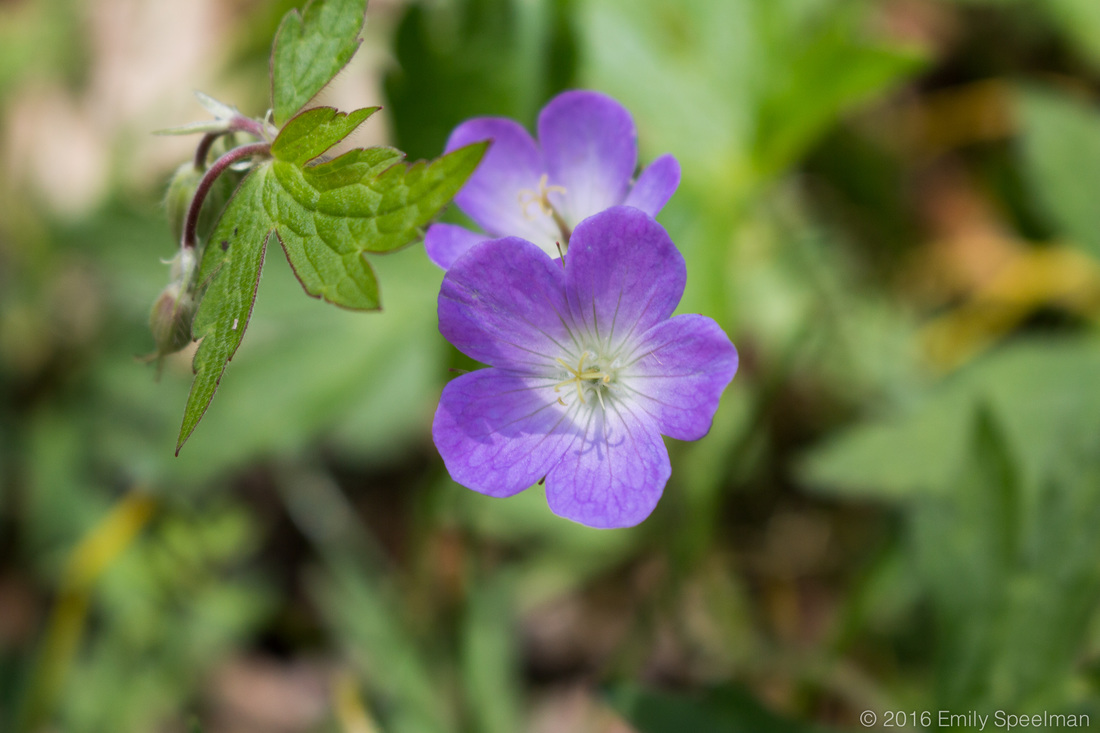
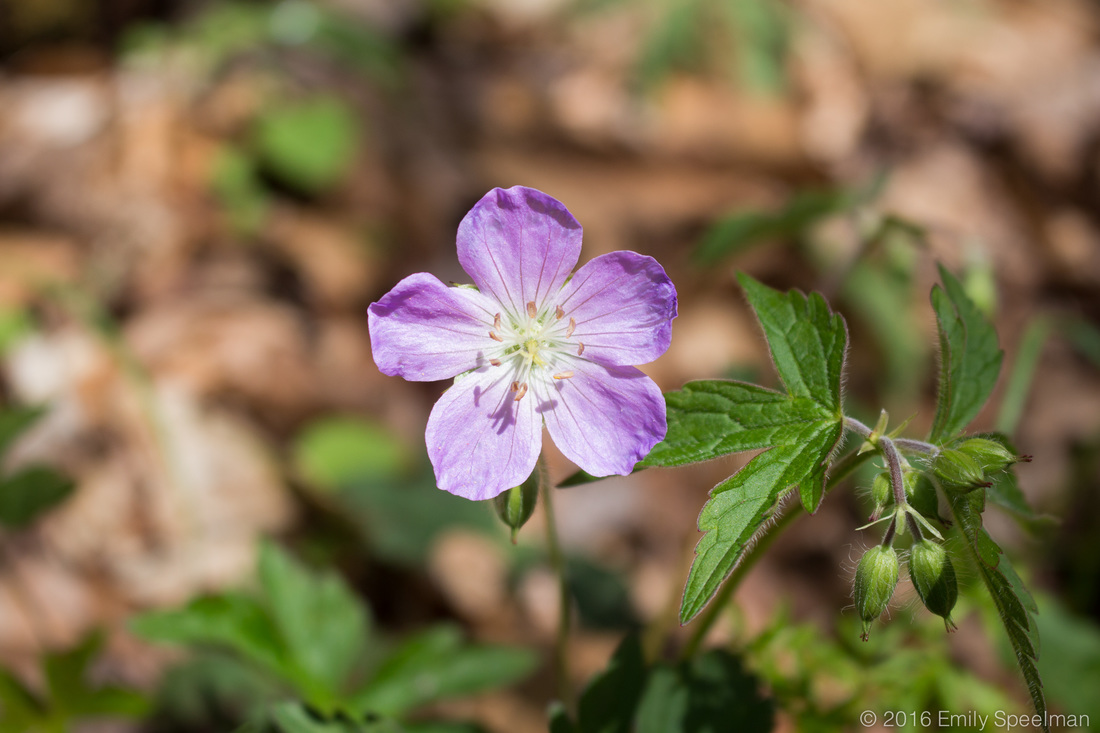

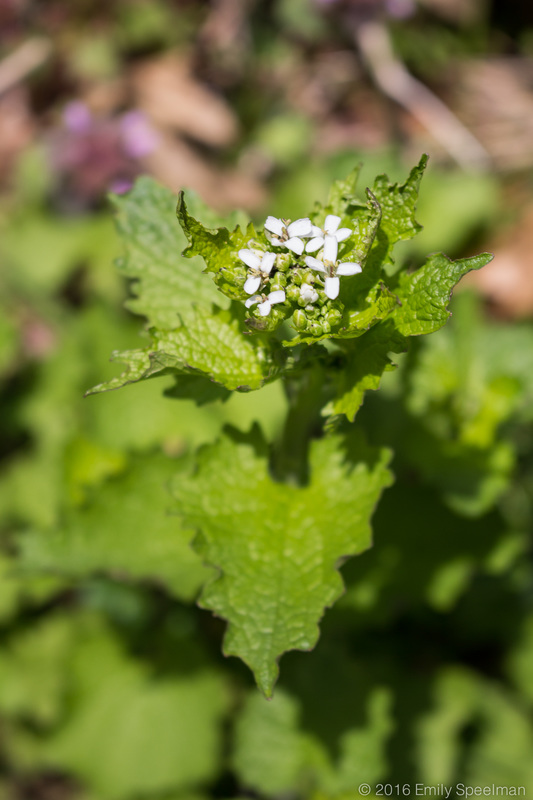
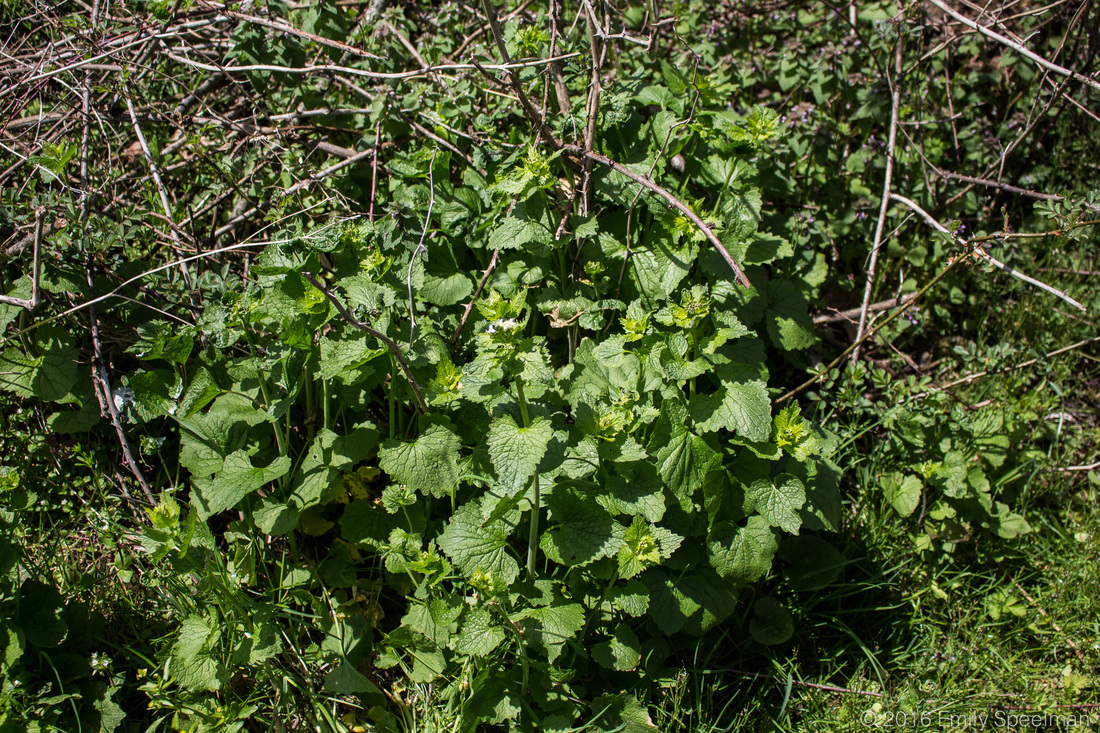
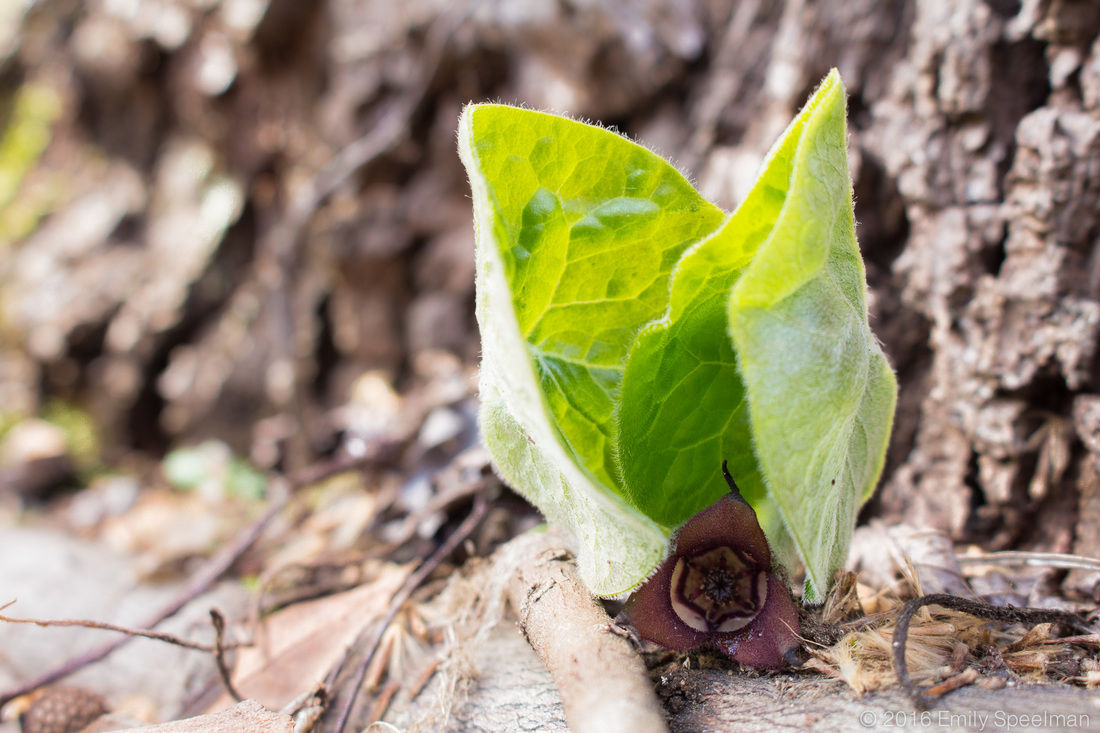
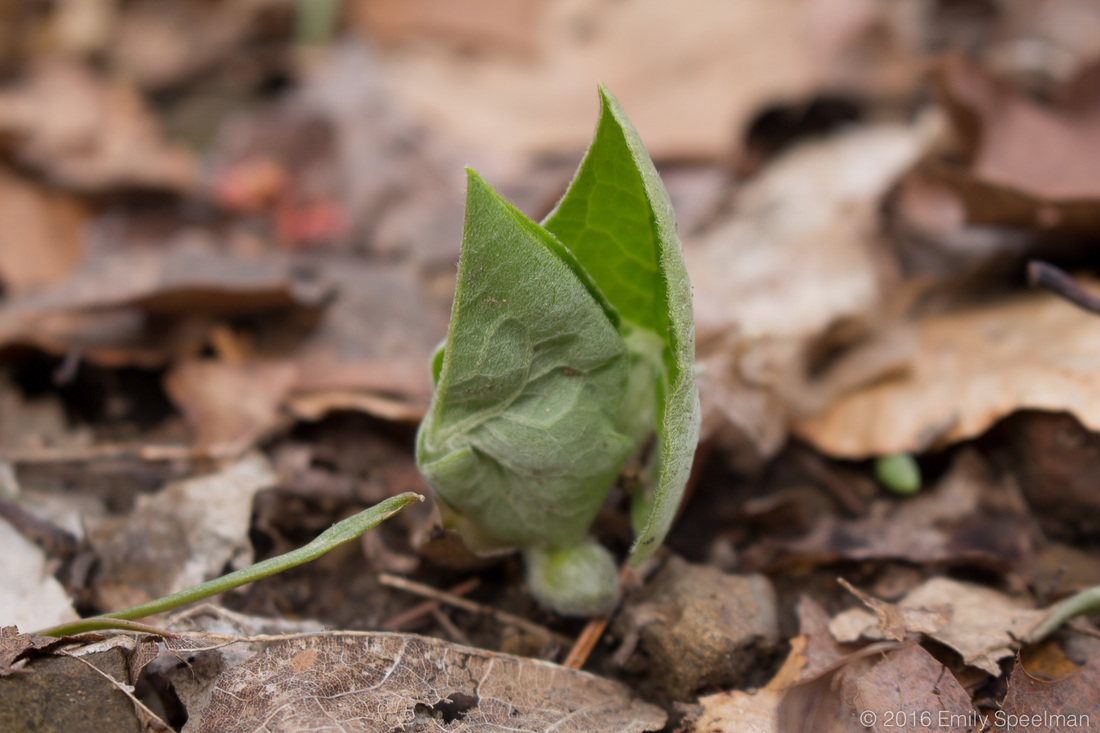
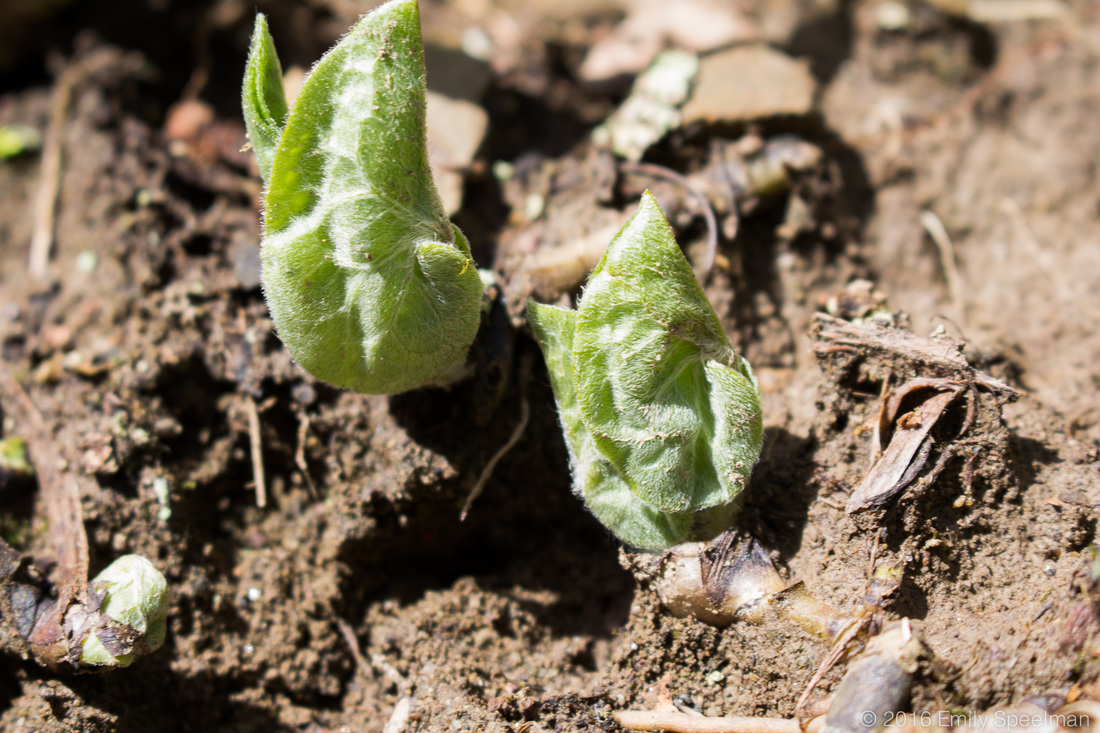
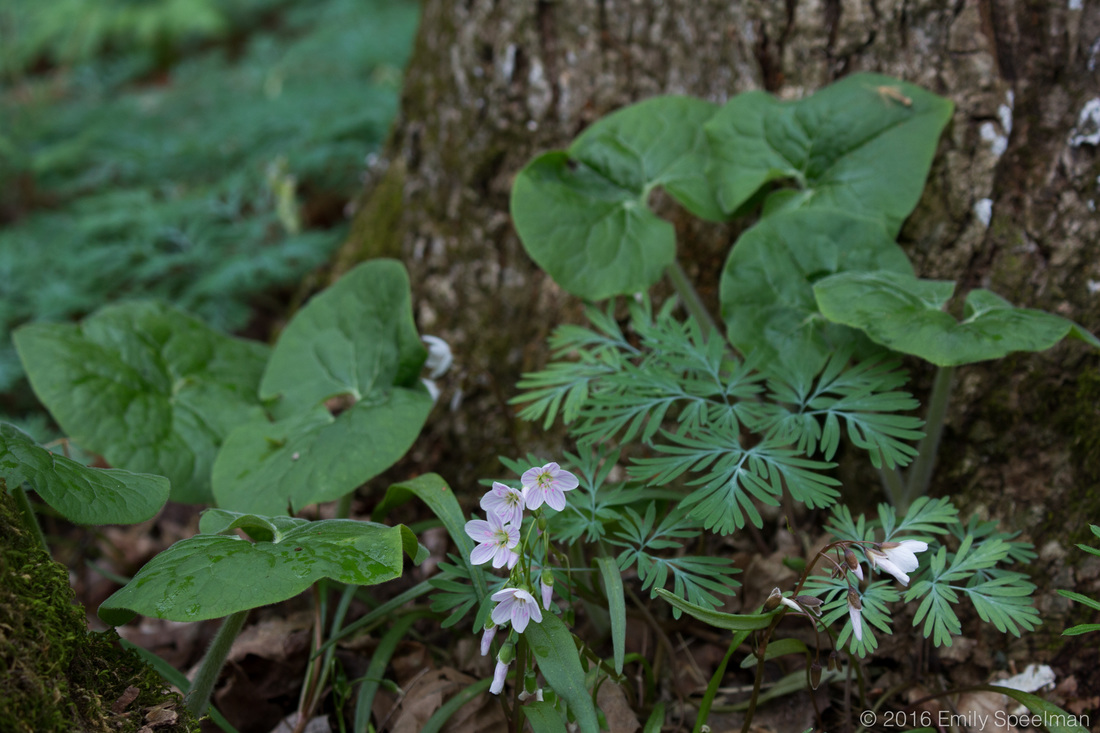

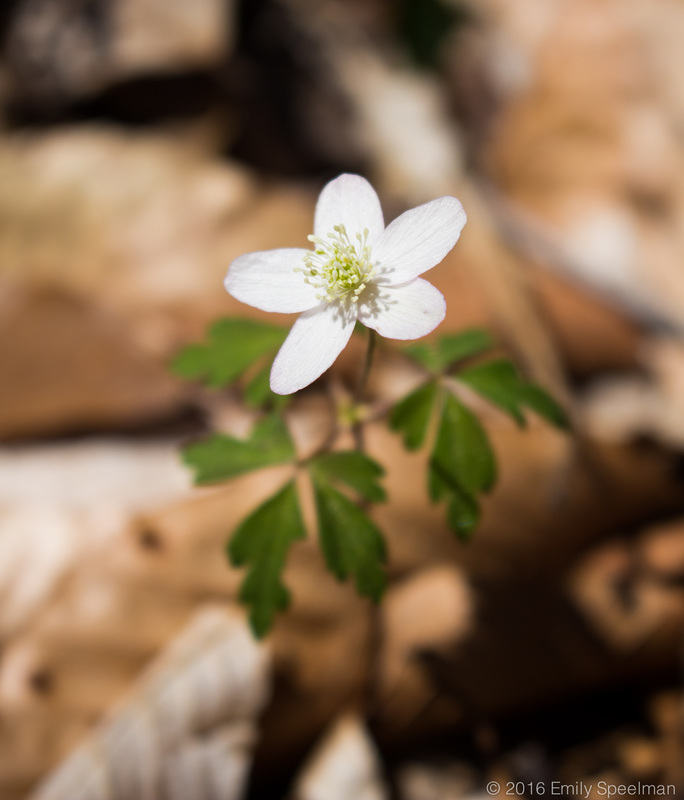
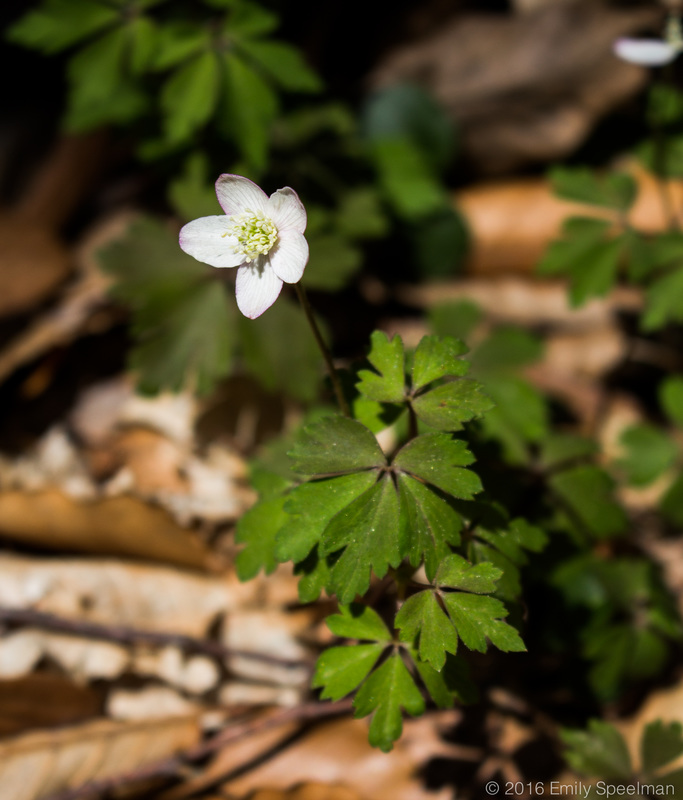
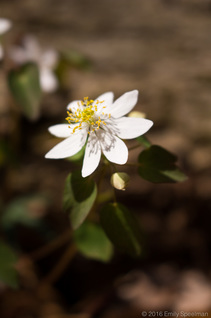
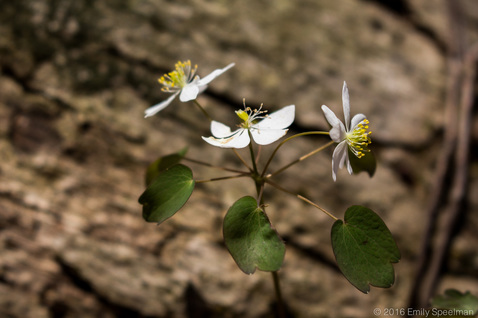
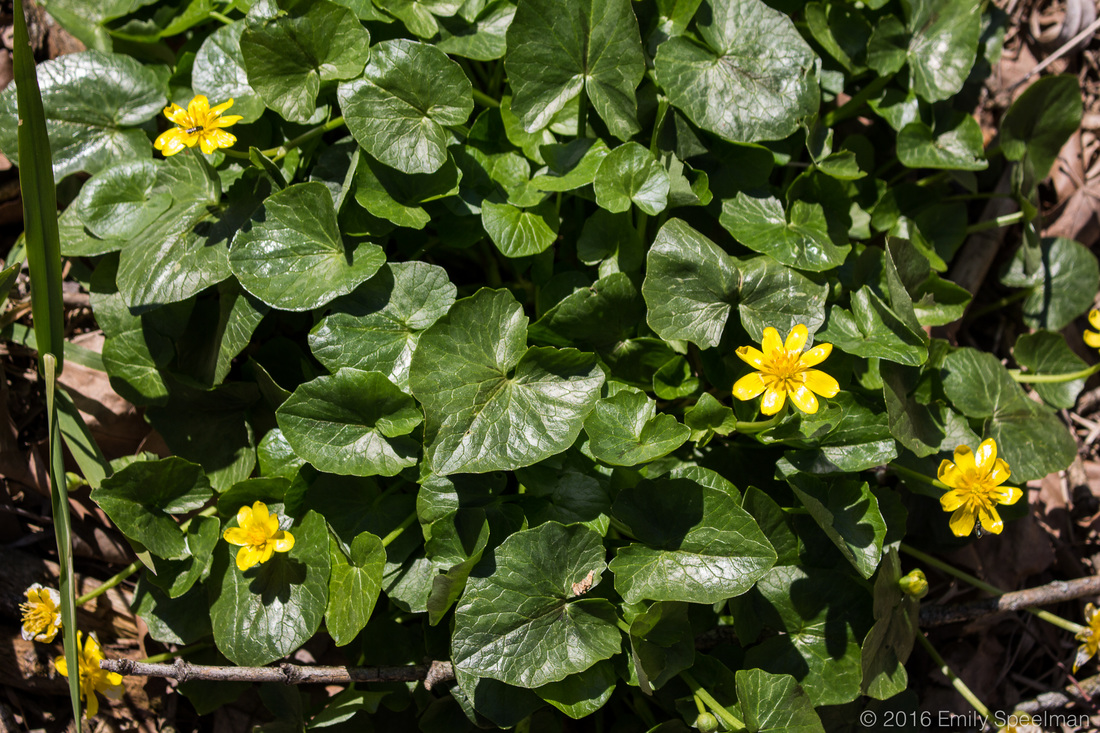
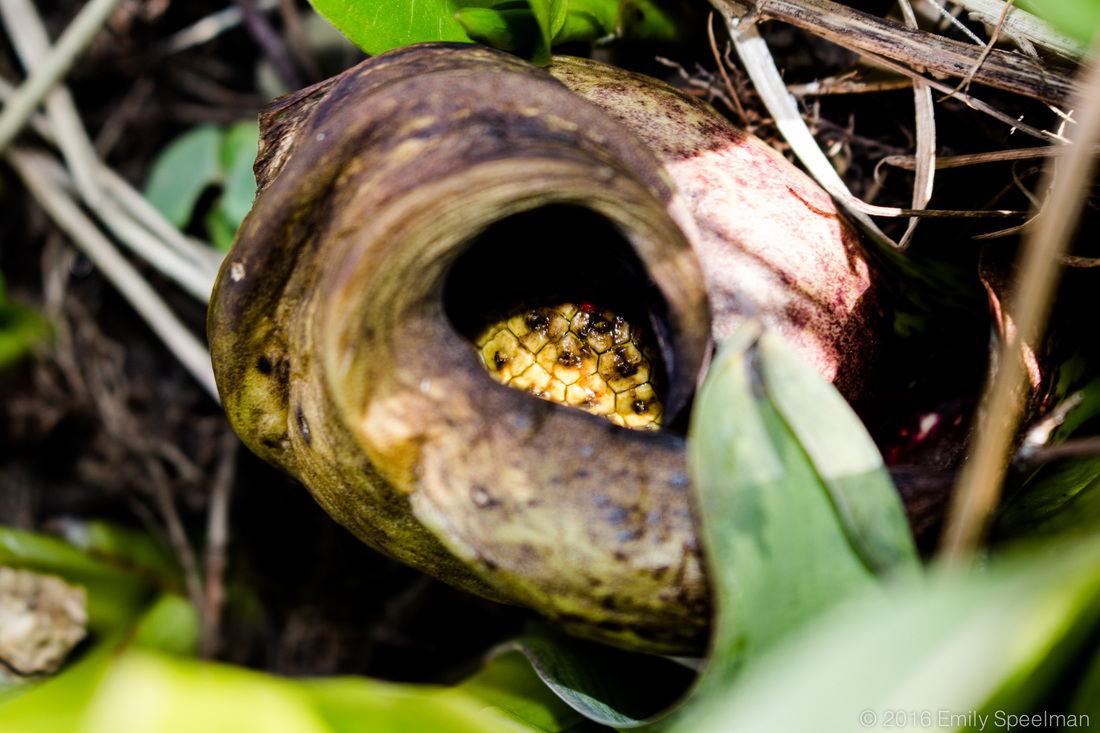
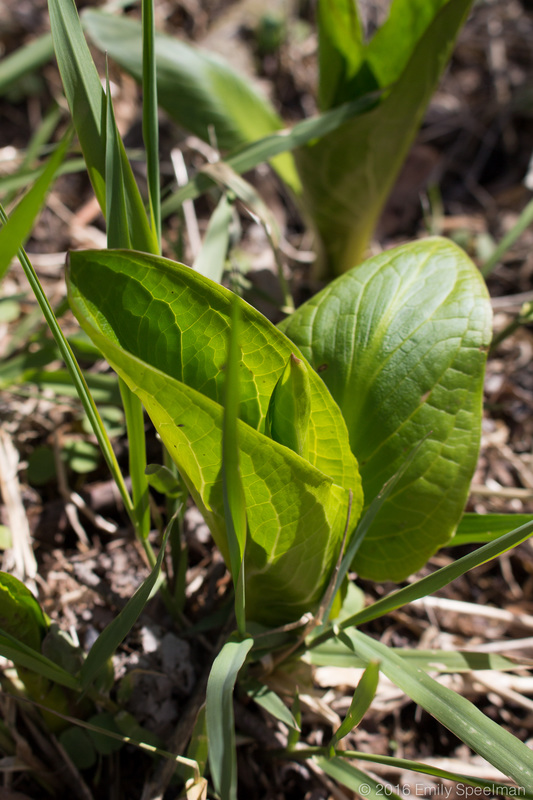
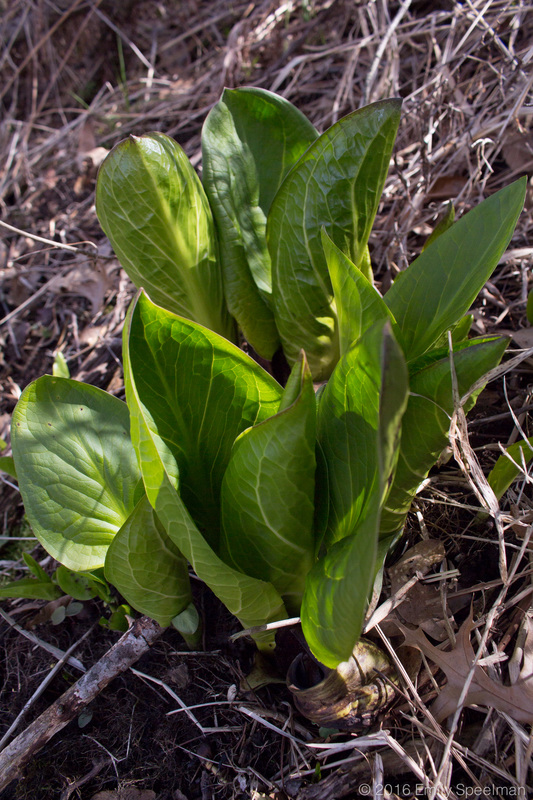
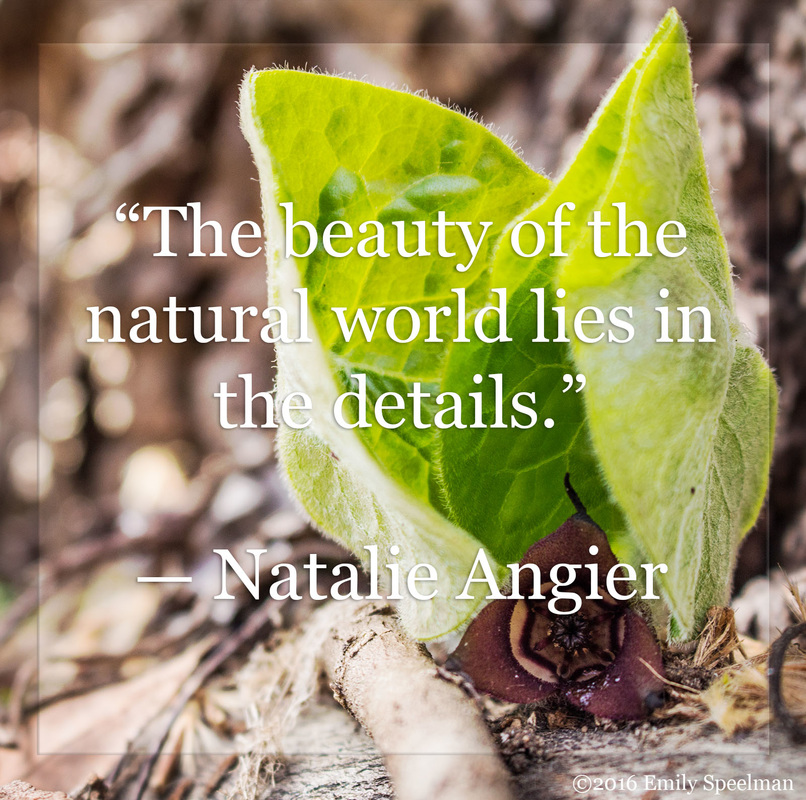
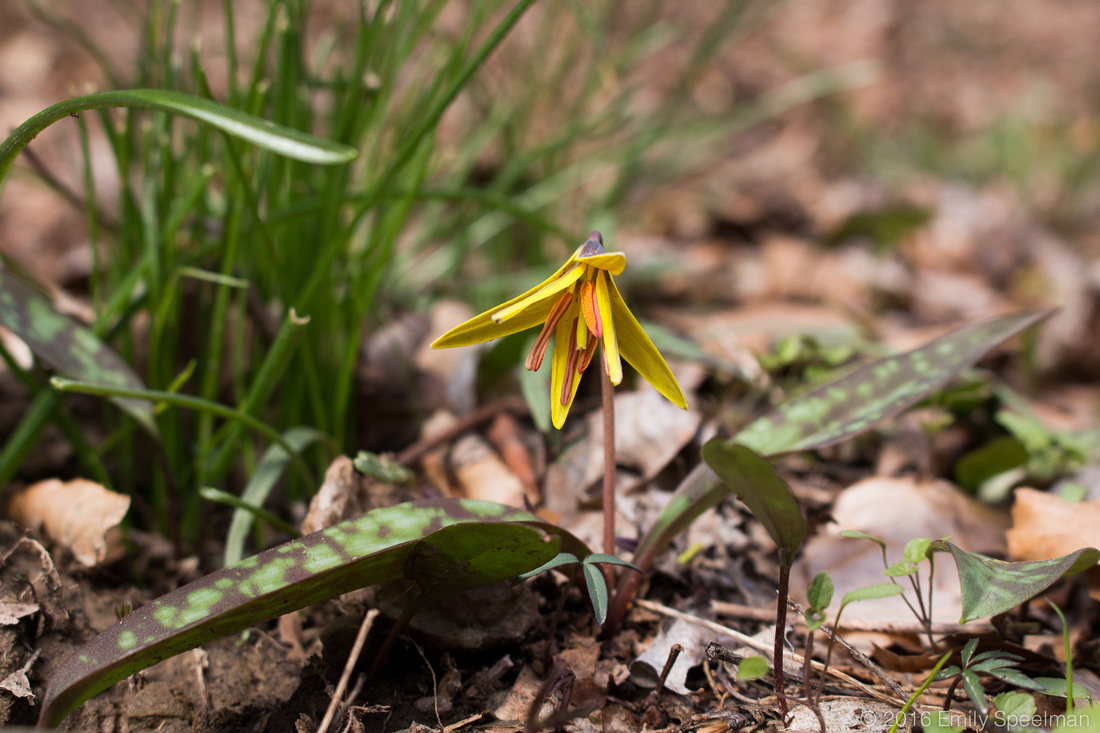
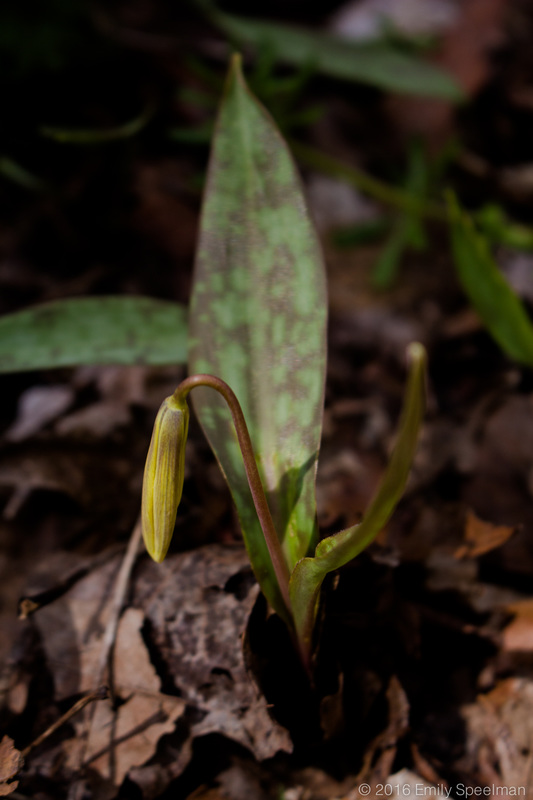
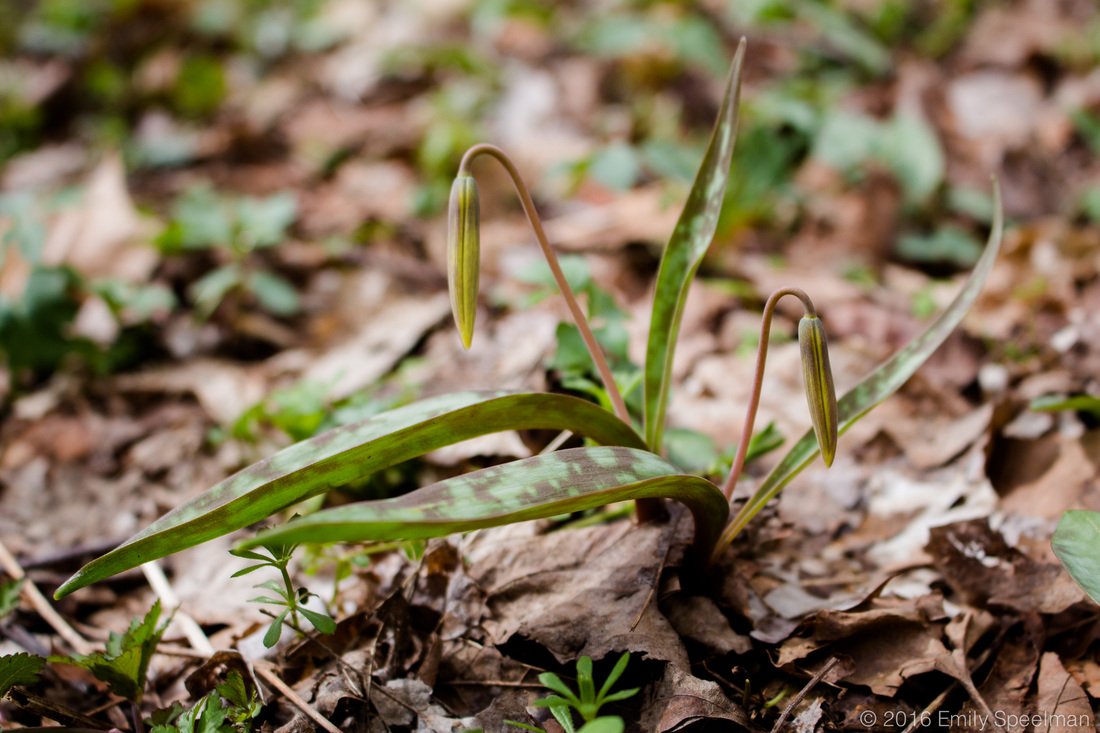
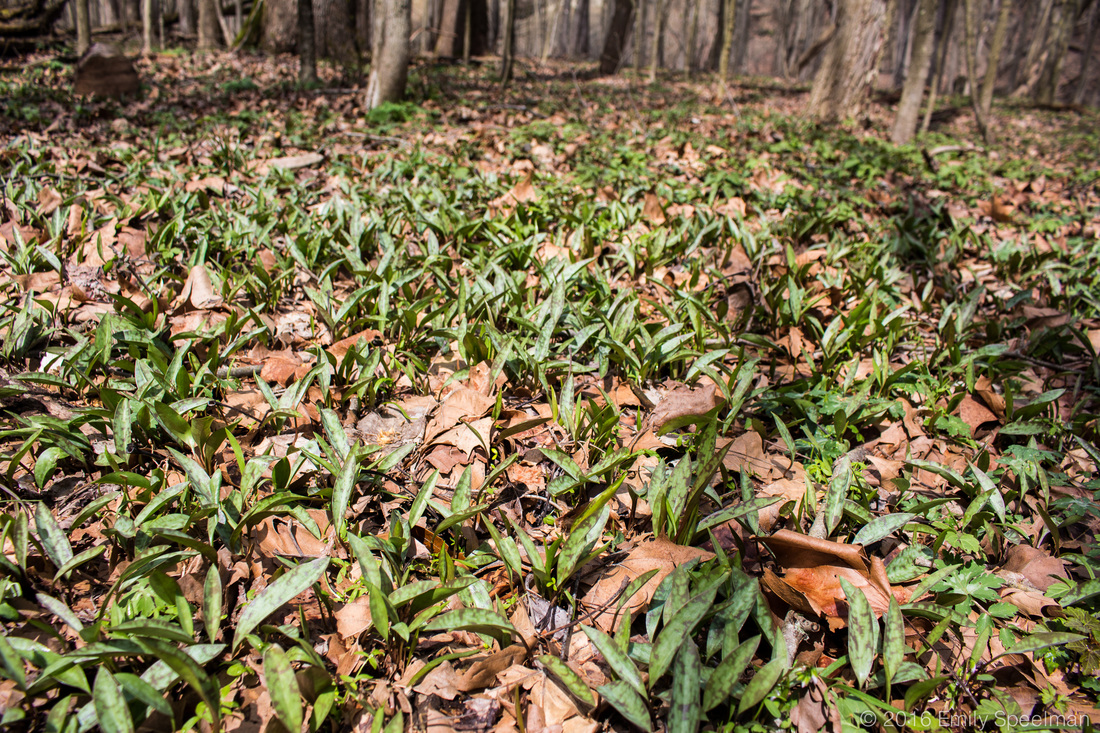
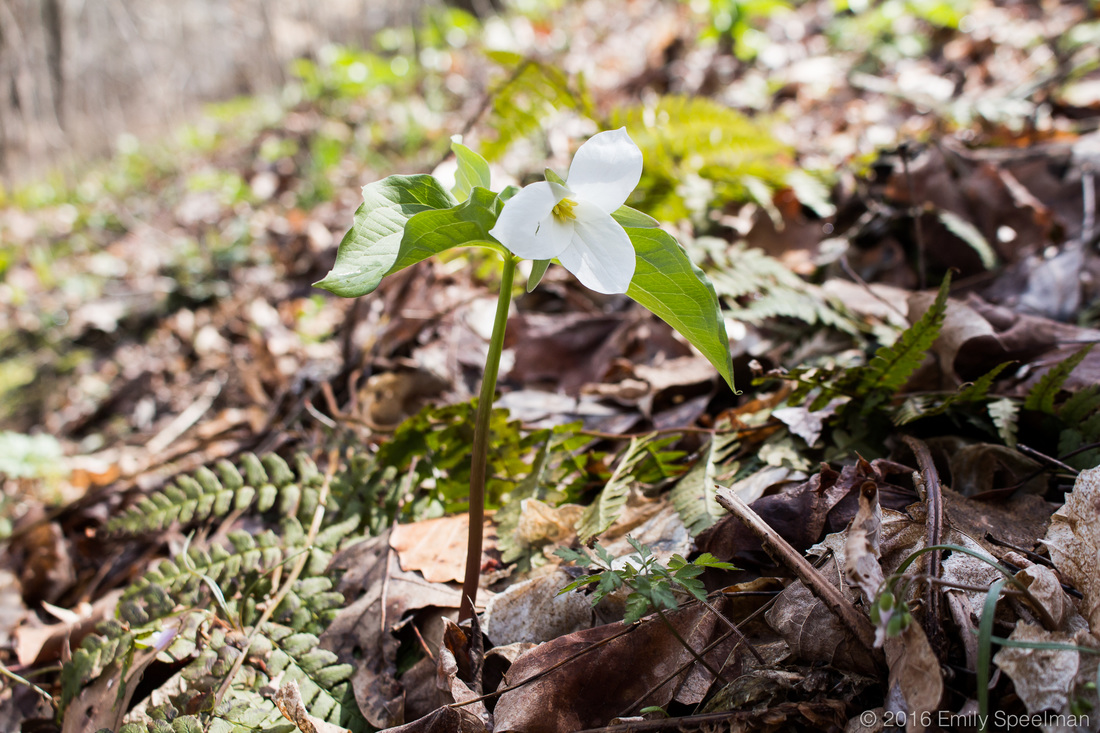
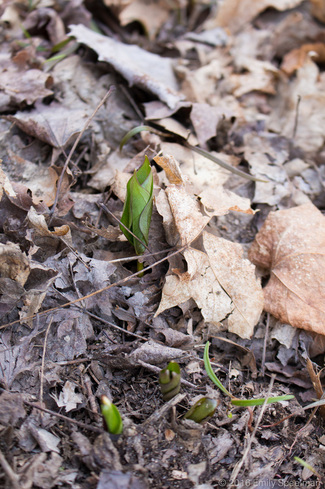
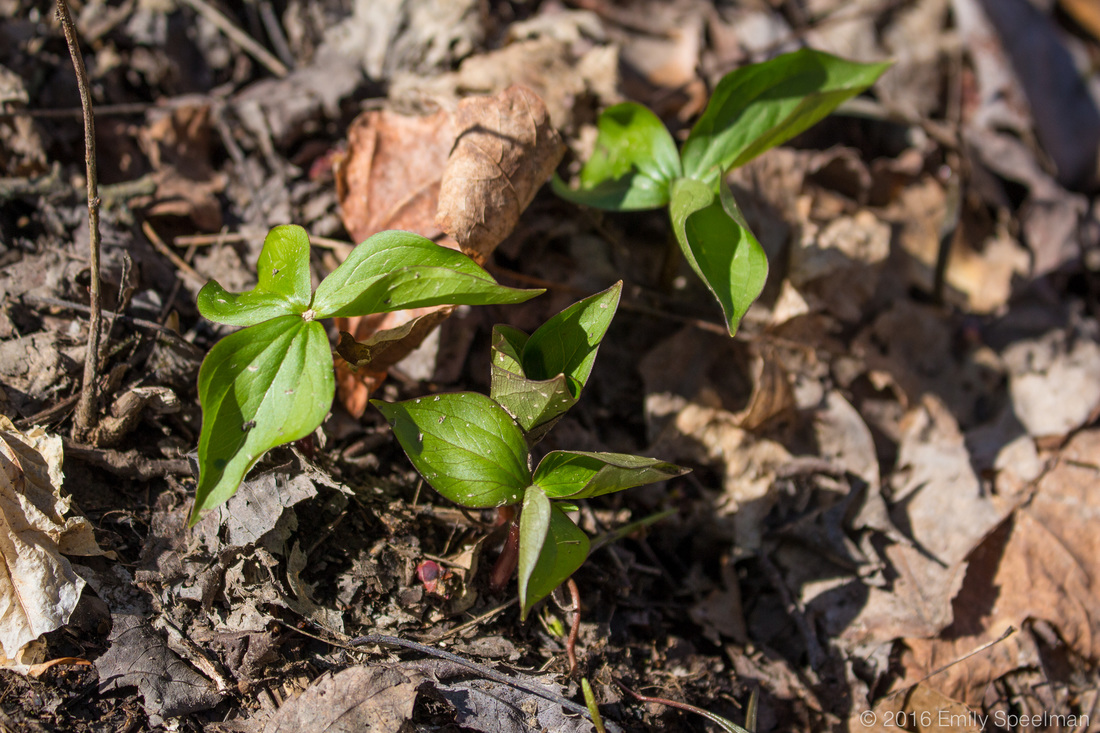
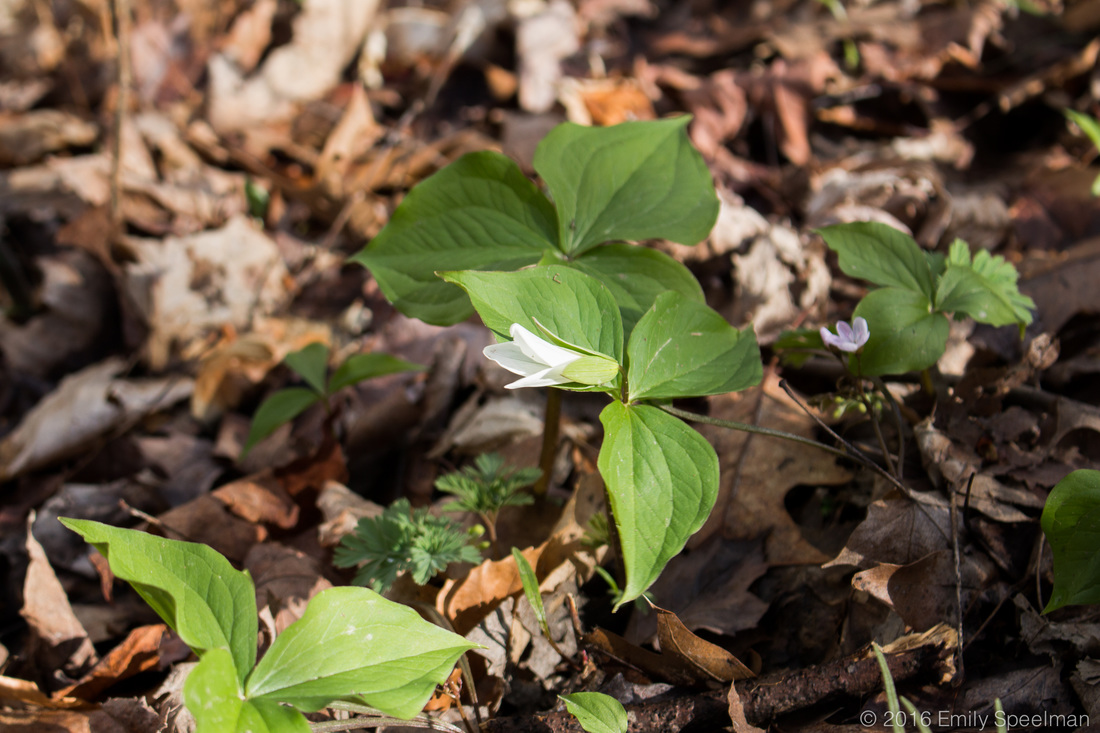
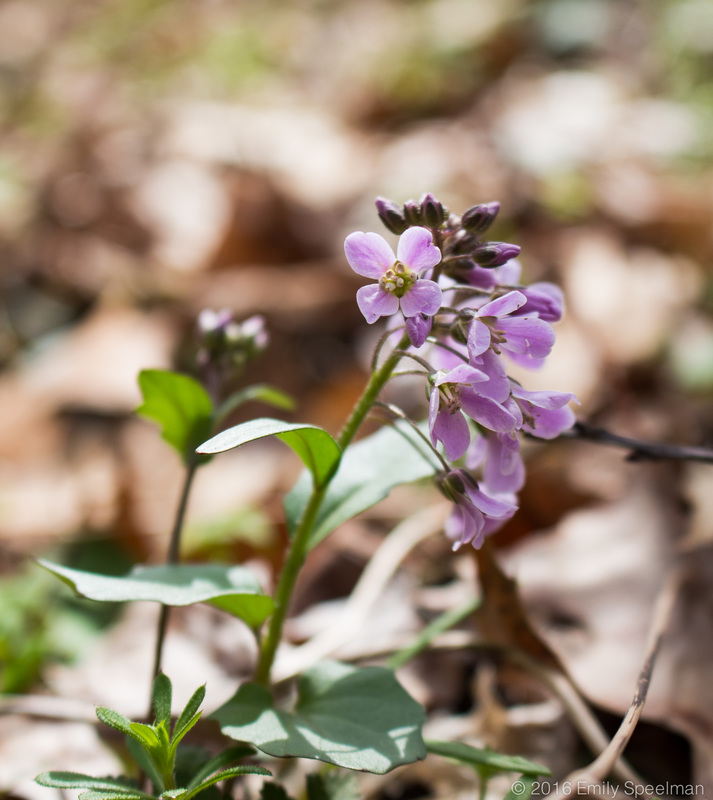
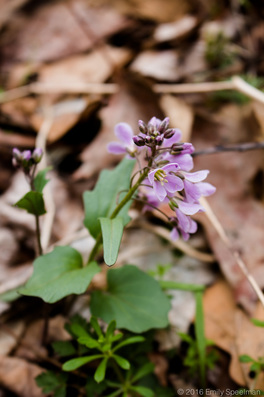
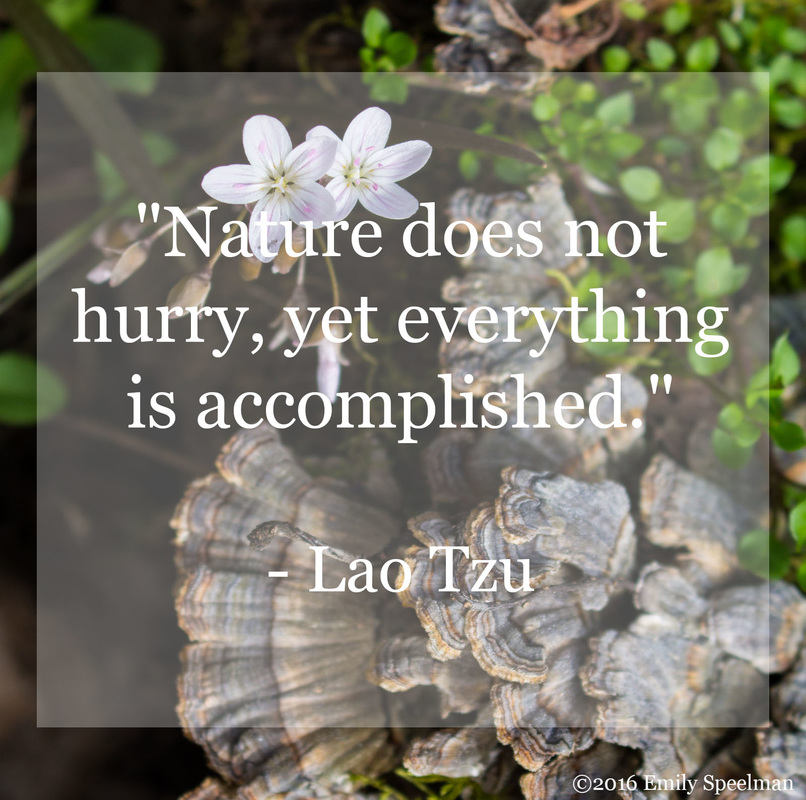
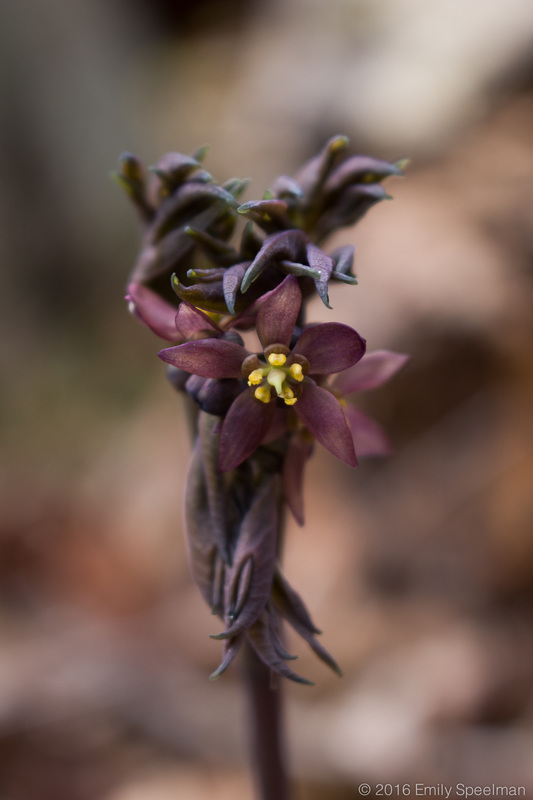
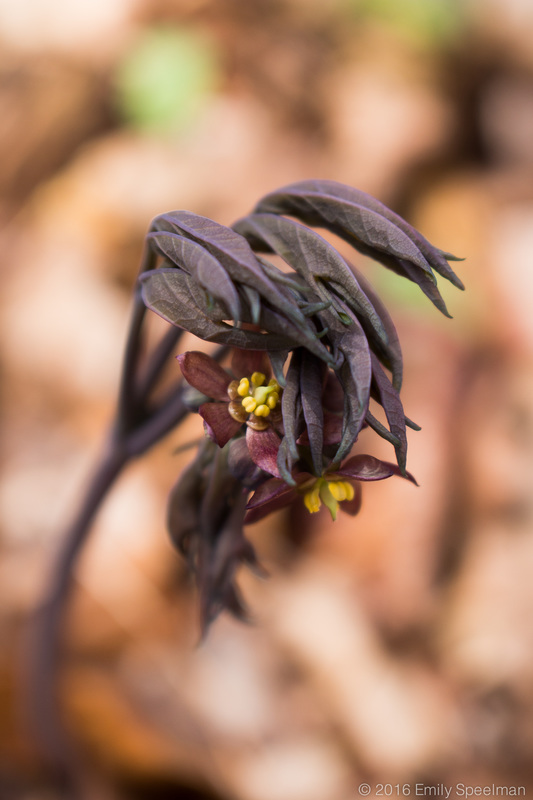
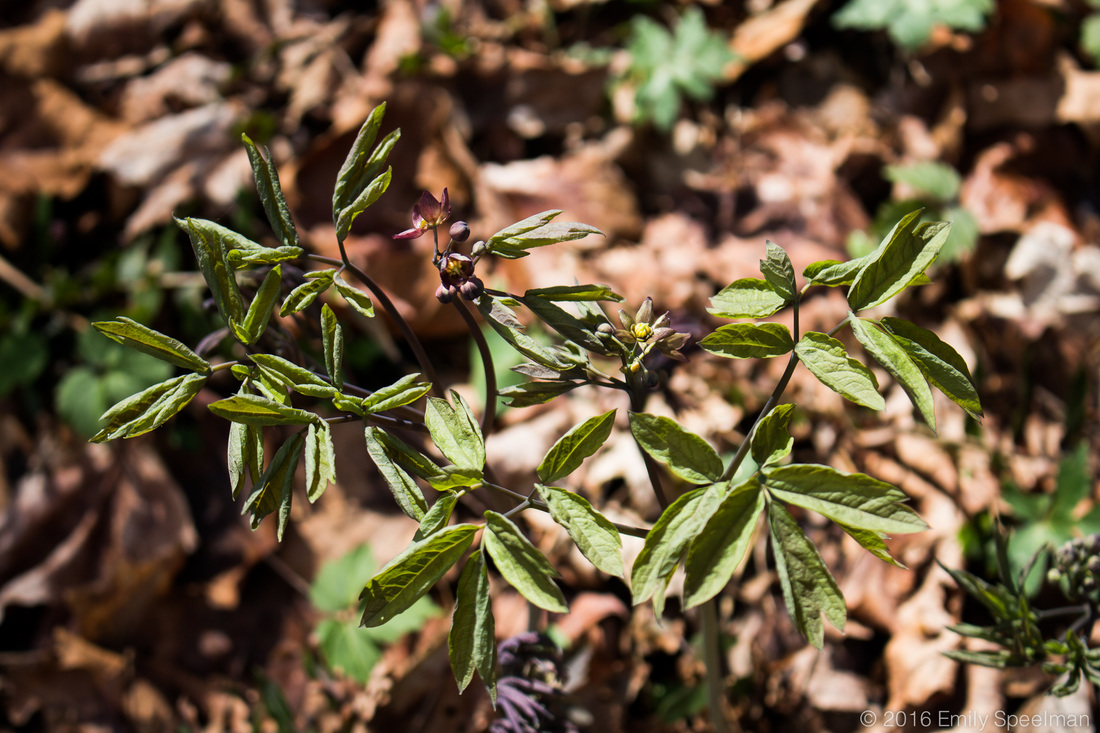
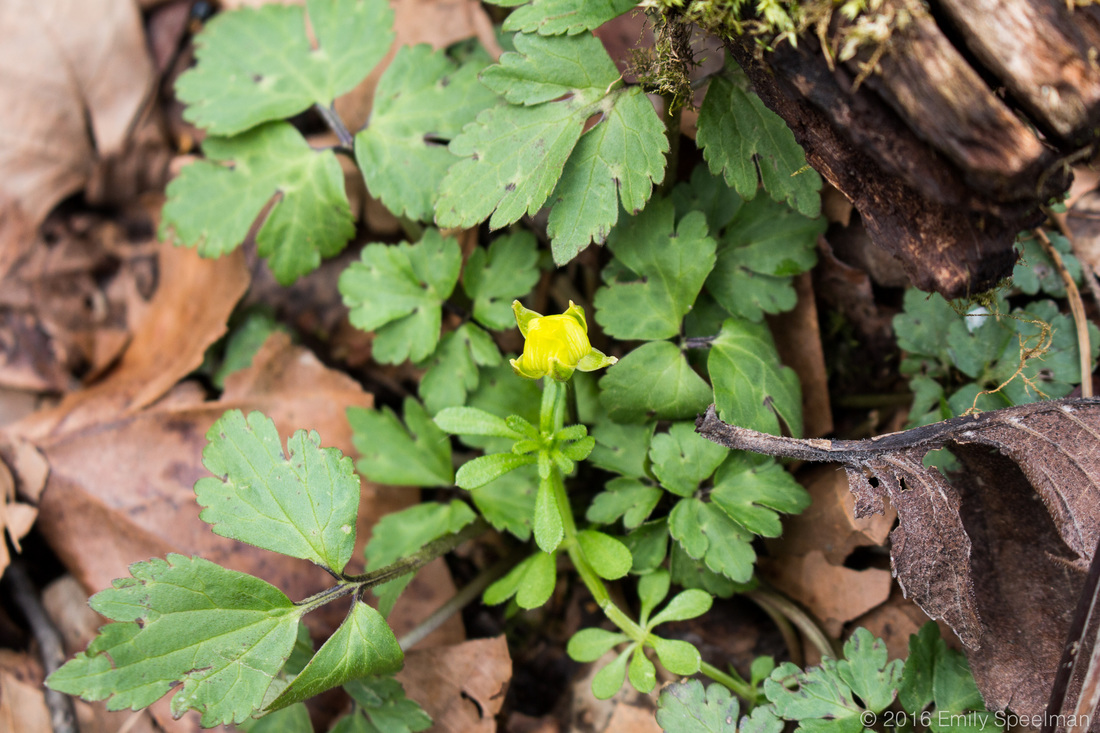
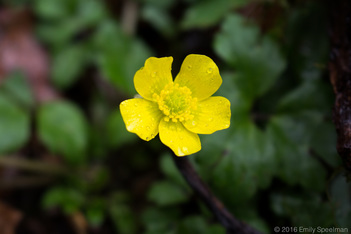
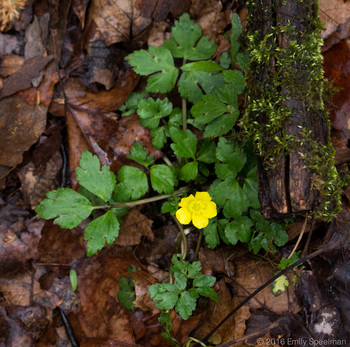
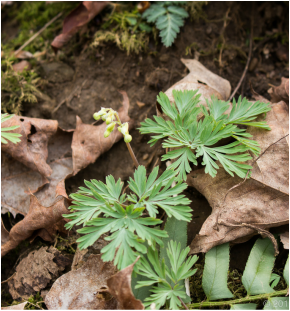
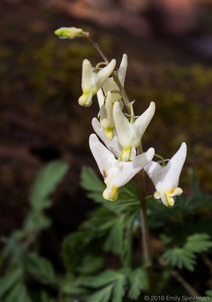
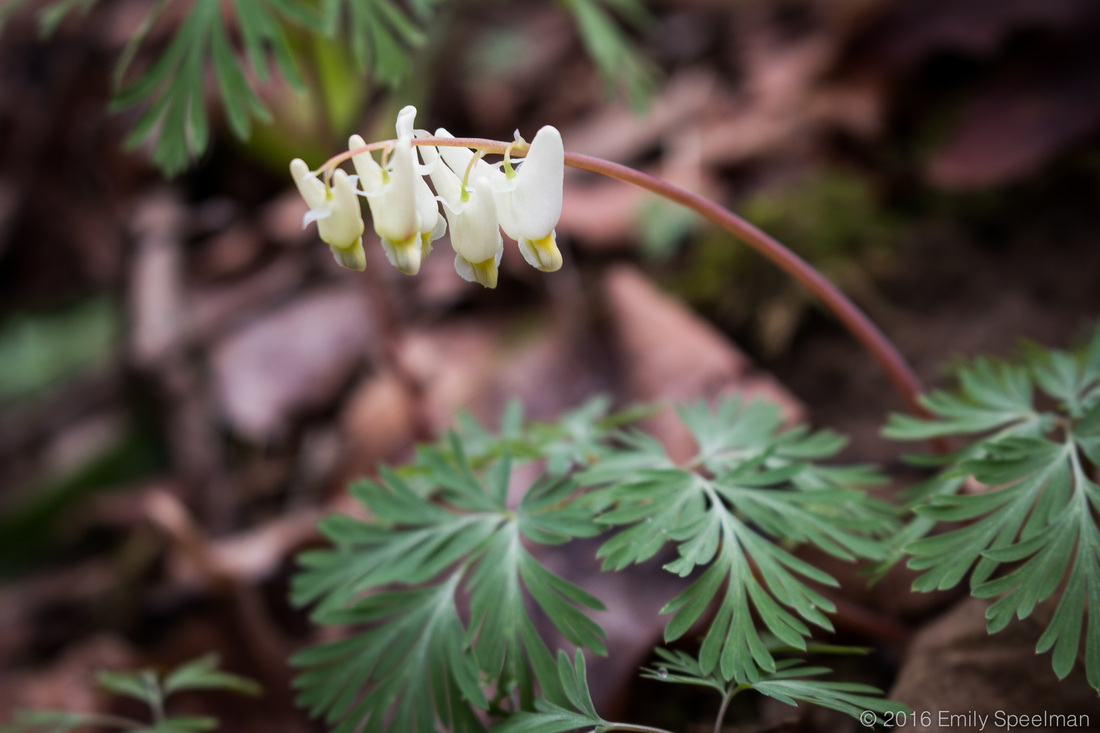
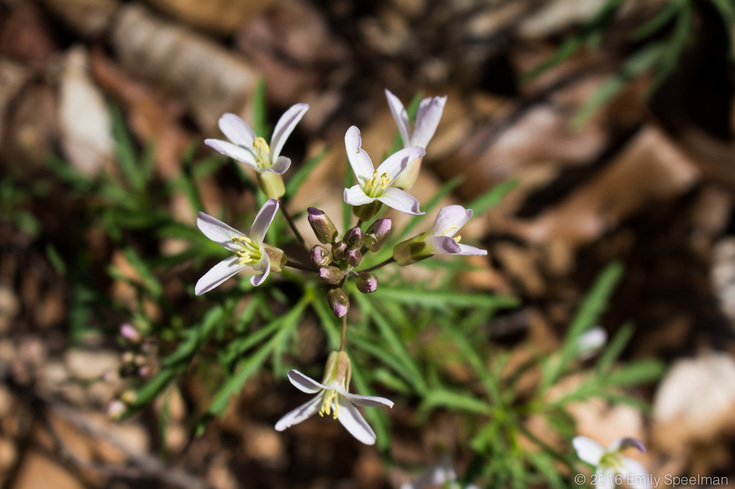
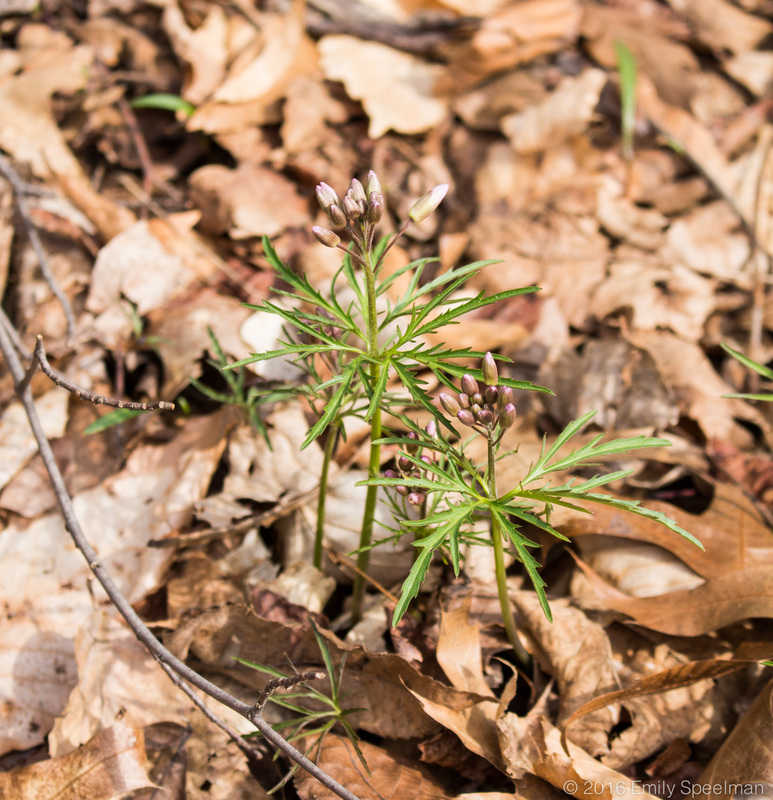
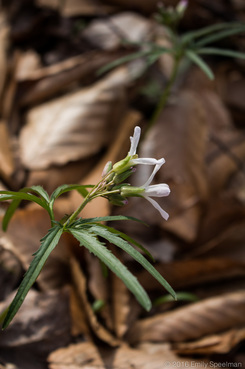
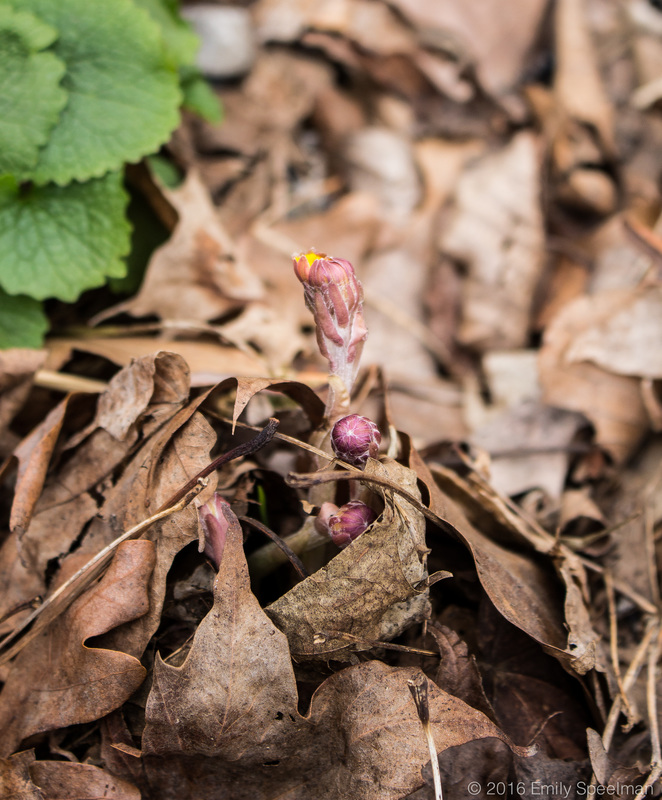
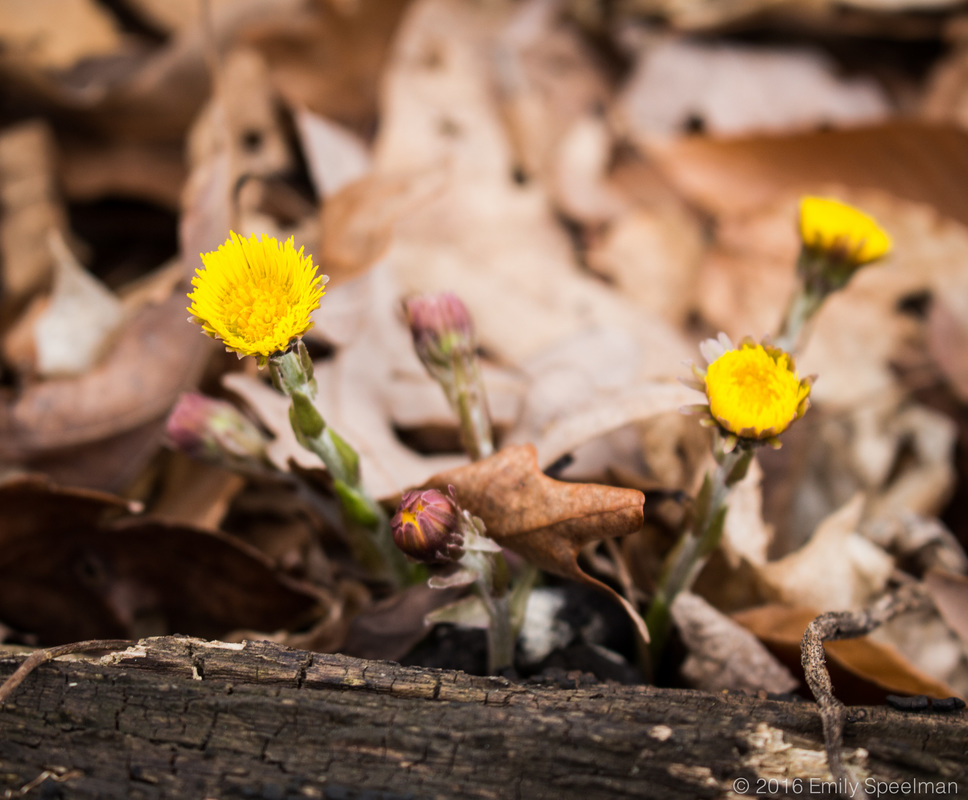
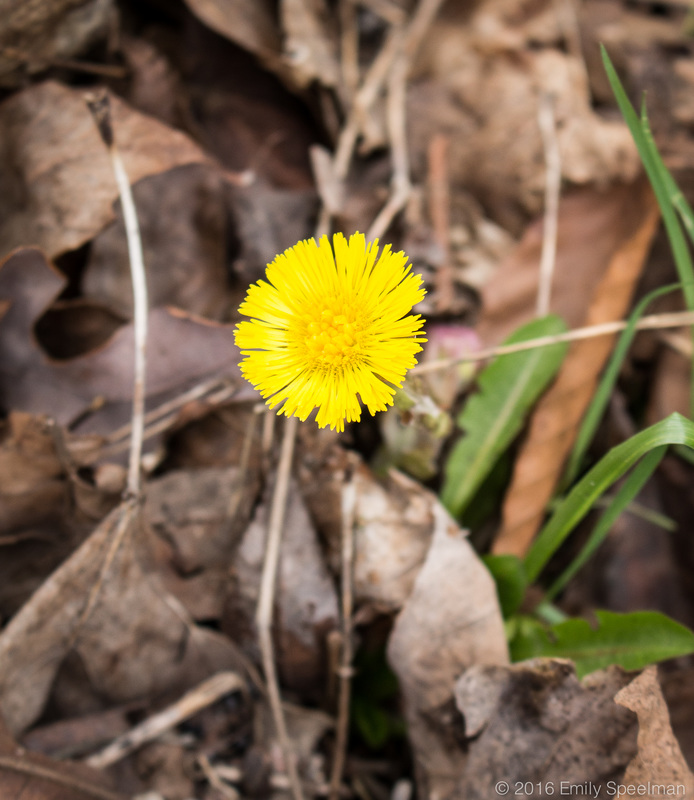
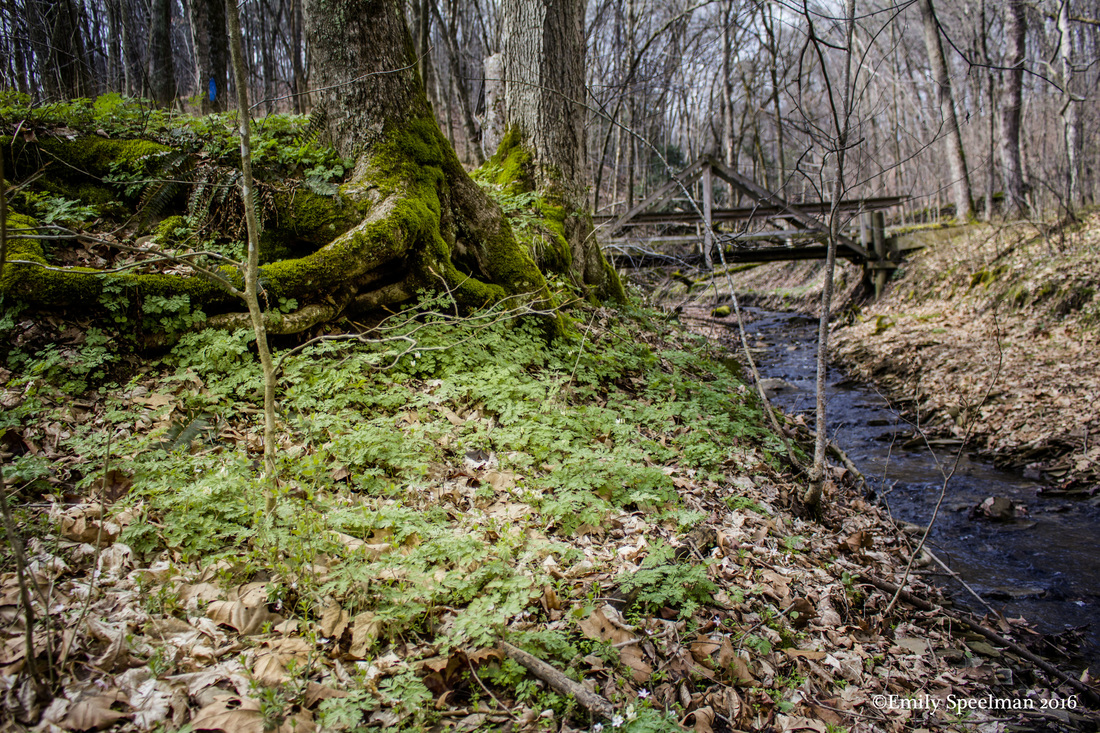
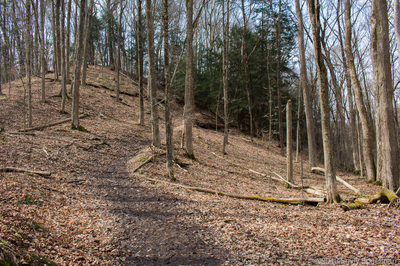
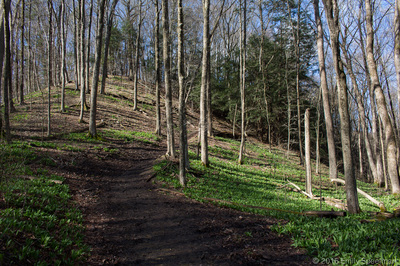
 RSS Feed
RSS Feed